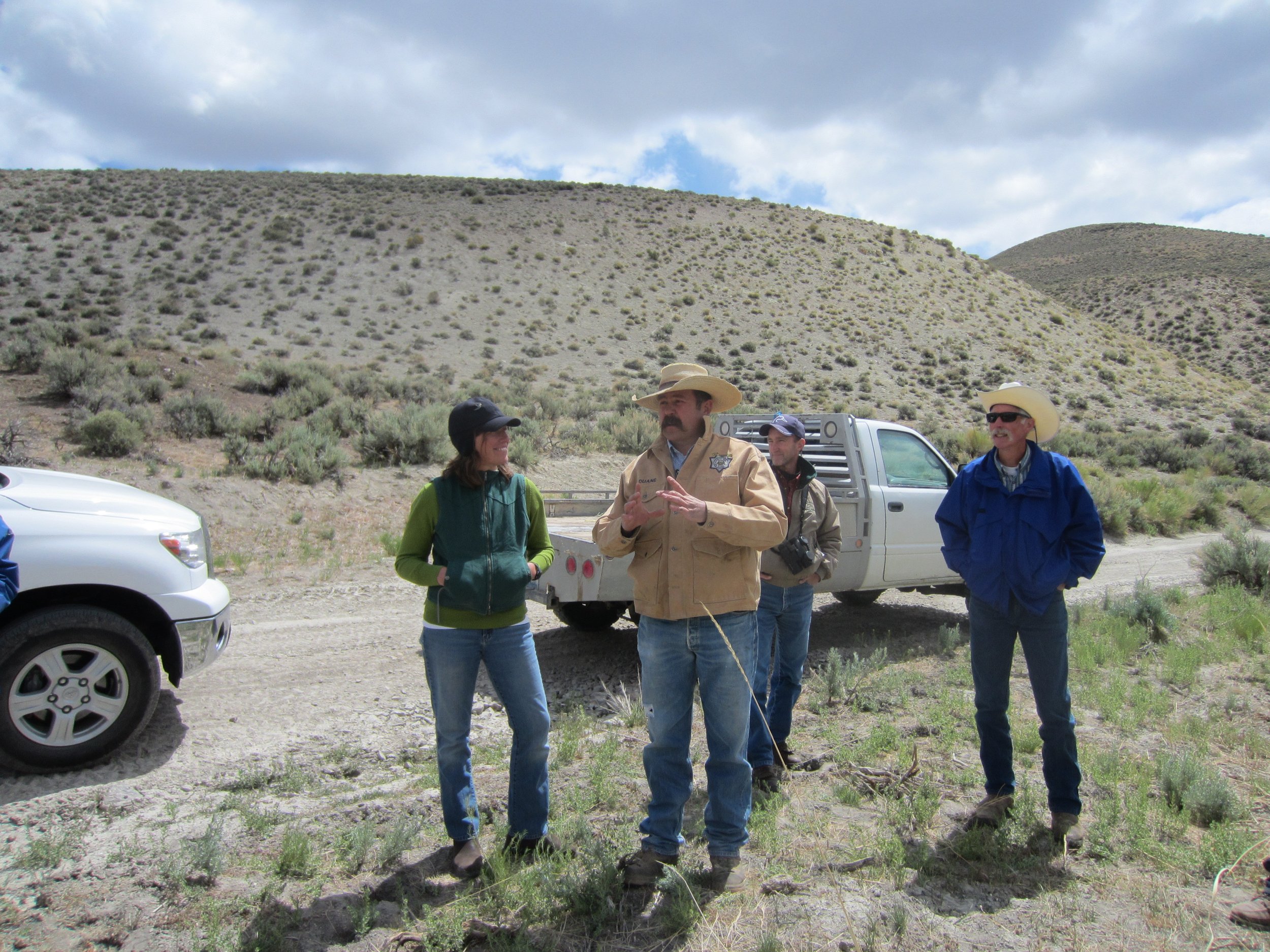Finding Common Ground Through Relationships, a Nevada Rancher’s Perspective
Posted on June 12, 2013 for the Intermountain West Joint Venture
The 9,700-foot Desatoya Mountains protrude from the valley floor and the Smith Creek Ranch in central Nevada. This ranch encompasses a diversity of habitats and is a prime example of public-private partnership at a landscape level. The majority of this 250,000-acre cattle operation takes place on public Forest Service and Bureau of Land Management (BLM) lands. Ranch Manager Duane Coombs knows the ranch couldn’t exist without public land grazing permits and he works hard to foster good relationships with the federal agencies that administer these domains.
“The success of our operation is based around people,” Coombs said. “If I take time to go to the BLM with a problem and we discover how a joint solution can fix both our problems, it’s a no brainer.”
An example of this is the possibility that the Greater Sage-grouse might be listed as an endangered species, Coombs said. The removal of invasive juniper from strategic locations allows for increased grass production (good for livestock) and reduces the trees that raptors perch on when hunting (good for sage grouse). Juniper are also thirsty plants, so their removal frees up more groundwater in the area. It’s a win-win situation if a rancher wants more grass for grazing and the Fish and Wildlife Service wants more sage grouse.
“That’s a cattleman’s dream,” Coombs said.
Photo by Ali Duvall
Coombs studied Range Management from Utah State University. He said this degree gave him more of a science-based understanding of the land, but its main benefit was teaching him the “agency” language of conservation and land management. He already spoke “cowboy” from growing up in a ranch family and working on cattle operations in Colorado and Utah. Now he’s fluent in both.
Today, Coombs gives up a good part of his year to travel the country, speaking both languages to a variety of audiences to preserve the heritage of working lands.
“We can’t just put our heads down in the brush,” Coombs said. “The values working lands provide to society have to be shared with the world. It’s not what I most desire to do. I’d much rather stay home and ride my horse. But by being active in sharing this story gives the ranch more options.”
Options include keeping the door open to work efficiently and successfully with organizations like the BLM, Forest Service, Fish and Wildlife Service, or even his neighbors.
“I work hard for these relationships,” Coombs said. “If we consider how our actions impact the other and take time to understand where other people are coming from, it makes it easier to find that common ground.”
Photo by Ali Duvall
From left to right: Susan Abele (U.S. Fish and Wildlife Service), Duane Coombs (ranch manager), John Ranlett (Ducks Unlimited), and Terry Mansfield (Partners for Conservation).
“Duane Coombs is truly an exceptional individual that we can all learn from,” said Ali Duvall, Assistant Coordinator at the Intermountain West Joint Venture. “He leads with a soft-spoken humility, and a true wisdom based on lessons learned from the land and relationship.”
After touring the Smith Creek Ranch, Duvall said, “the conservation community and government decision-makers need more champions like Duane to help us get to on-the-ground solutions for imperiled species and working lands.”
And his efforts seem to be working. Both Coombs and Ray Hendrix, owner of Smith Creek Ranch, were the 2010 recipients of the BLM Rangeland Stewardship Award.
“In the end,” he said, “the fate of both the sage grouse and ranching on public lands will come down to how well we can build relationships and work together to share the work–-and the rewards.”

